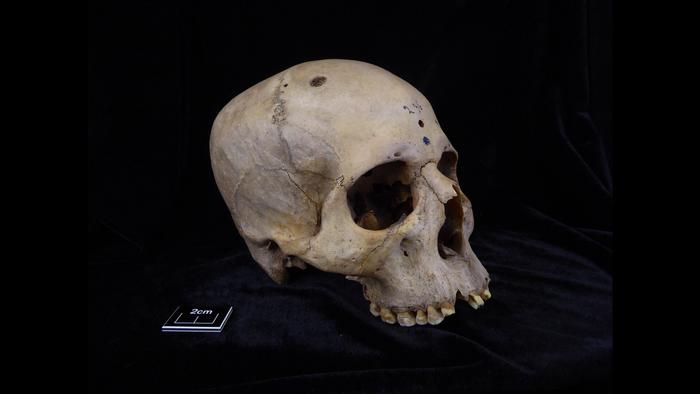Skull Incisions Show Ancient Egyptians’ Interest in Medicine
Posted on Categories Discover Magazine

It’s often appropriate to say that a particular practice “isn’t brain surgery” — except when it is. That may be the case in incisions to an ancient Egyptian skull that shows signs of an operation, according to a new study in Frontiers in Medicine.
Researchers in the study examined two skulls from the University of Cambridge’s Duckworth Collection, curious about the role of cancer in ancient Egypt.
In ”Skull 236” (dating from between 2687 and 2345 B.C.E., from a male), microscopic observation revealed a large wound consistent with excessive tissue destruction caused by a tumor, as well as 30 or so smaller lesions that resemble marks made by metastasis. But what took them aback was signs of incisions around some of the wounds.
“It was surprising to see the cut marks at the microscope because we immediately realized the significance and implications of the discovery: Ancient Egyptians, more than 4,000 years ago were already performing a surgical intervention in relation to tumors,” says lead author Edgard Camarós, a paleopathologist at the University of Santiago de Compostela.
Ancient Surgery
However, the researchers have no conclusive way to determine whether the surgery was performed before or after the subject died.
“There is a narrow window of time when the surgical cut marks could have been performed,” says Camarós.
Someone could have cut into the skull either as an attempt to treat the cancer, or as an exploratory medical autopsy to determine the patient’s cause of death. Either option makes the find no less remarkable.
“Both possibilities reveal an oncological surgical intervention intimately related with the tumors, which is itself an exciting discovery,” says Camarós.
Read More: The Upsetting World of Primitive Brain Surgery
Wounded Women Warrior?
Another specimen, “Skull E270” (dating from between 663 B.C.E. and 343 B.C.E., from a female) doesn’t show signs of surgery. But it is perhaps no less remarkable, for several reasons.
First, it shows lesions likely caused by a sharp medical object, which eventually healed. That could mean the head wounds were successfully treated.
Second, E270 belonged to a female, and the conventional wisdom is that Egyptian women didn’t participate in warfare. Signs that she was wounded in combat, then treated and healed, could rewrite the role of Egyptian women in battle. The alternatives are that the slashes — probably caused by a sharp metal blade — were either the result of punishment or a domestic dispute.
Read More: Ancient Egypt’s Fiercest Female Rulers
A Medical First
Finally, the skull also showed signs of a tumor — noteworthy because the researchers dated the person to be about 50 years old. The implication is that cancer in ancient Egypt, as now, occurred as people aged.
Many ancient Egyptian writings discussed medicine. Other archeological discoveries have shown evidence of dental fillings and prosthetic limbs. But this finding represents a new landmark.
“This is the first surgical intervention in relation to tumors,” says Camarós.
Read More: Ancient Medical Treatments Still Used Today
Article Sources
Our writers at Discovermagazine.com use peer-reviewed studies and high-quality sources for our articles, and our editors review for scientific accuracy and editorial standards. Review the sources used below for this article:
Before joining Discover Magazine, Paul spent over 20 years as a science journalist, specializing in U.S. life science policy and global scientific career issues. He began his career in newspapers, but switched to scientific magazines. His work has appeared in publications including Science News, Science, Nature, and Scientific American.